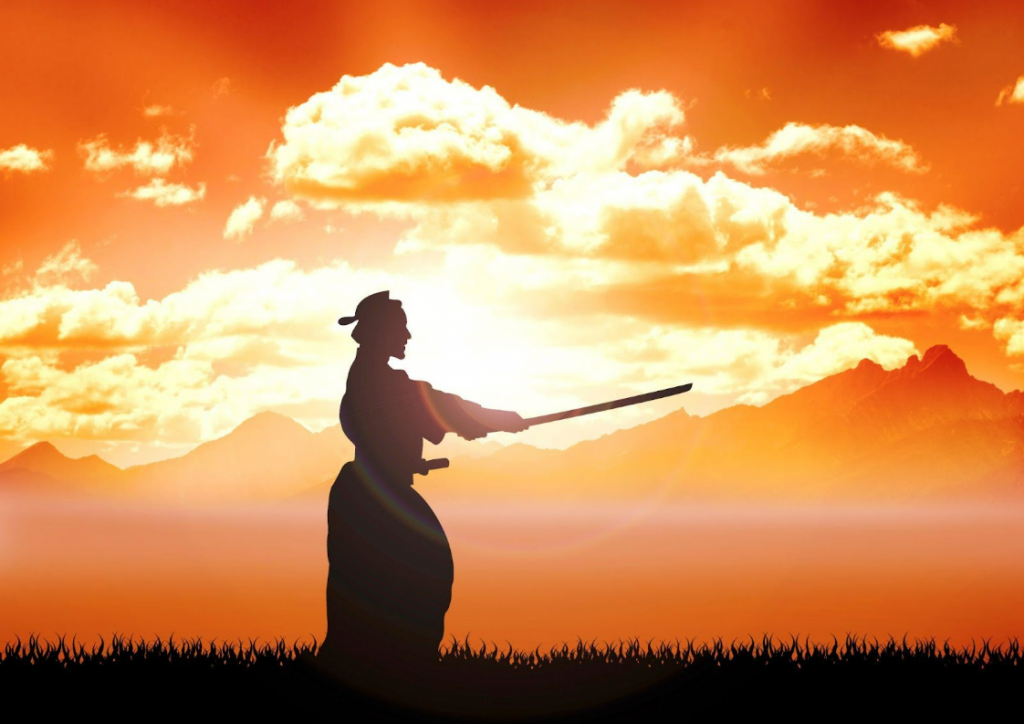
The first samurai appeared centuries ago in feudal Japan. Their influence remains prevalent in modern culture, especially in the form of digital art and photography. Various art pieces capture and display the skilled craftsmanship of samurai armor and attire, as well as their complex character.
In this article, we’ll explore the world of samurai art and photography, explaining who samurai are, why their art and photography are so popular today, and what you should keep in mind when working on creative samurai projects.
Samurai essence in photography
Samurai were the military nobility and warrior class of feudal Japan. To this day, they are widely known for their code of conduct (bushido), which focuses on loyalty, honor, and self-discipline. Samurai were skilled warriors trained in various martial arts, swordsmanship, archery, and horseback riding.
Samurai digital art and photography usually focuses on various details from the samurais’ lives. Things like armor and attire demonstrate their craftsmanship and historical significance. The complex character of the samurai is usually shown through expressions and poses that reflect their inner calm and philosophical depth.
The popularity of the art of the samurai
These days, samurai are depicted in art and photography for several reasons. The most widespread of them are:
- Symbolism and tradition. Samurai demonstrate Japan’s rich cultural heritage and historical identity. For Japanese people, samurai imagery evokes a sense of national pride, connecting contemporary society with a storied past and reinforcing cultural values and historical awareness. For foreigners, samurai symbolize an exotic and intriguing aspect of Japanese culture, fueled by a global interest in traditional cultures and the mystique surrounding the samurai lifestyle and ethos.
- Aesthetics. Both modern and old samurai art is not only interesting and captivating, but also very visually appealing. Samurai armor (Yoroi), weapons (especially the katana), and attire are meticulously crafted with intricate designs and patterns. The visual appeal lies in the harmonious blend of functionality and artistry.
- Historical interest. The history and values of the samurai captivate historians and enthusiasts alike. Samurai art helps people immerse themselves in this history and get a glimpse of samurais in battle, during training, and in their daily duties. Moreover, by preserving and depicting historical scenes, samurai art helps maintain a collective memory of Japan’s past. It ensures that the stories and lessons of the samurai era are remembered and valued.
- Spiritual and philosophical inspiration. The samurai code of ethics, Bushido, can be inspiring both spiritually and philosophically. What’s more, samurai art and photography help viewers understand this code better and reflect on broader themes of morality, discipline, and the fleeting nature of life, often symbolized by elements like cherry blossoms. After all, samurai culture was deeply influenced by Zen Buddhism, which emphasizes mindfulness, simplicity, and the impermanence of life.
How to create authentic samurai art and photographs
The process of creating authentic samurai art and photographs is generally a thorough and detailed process. Follow the next steps and tips to craft eye-catching visuals:
Step #1: Do your research
You can do this by studying historical references and exploring different art and photography styles. Historical references can help you understand the samurai lifestyle better—for instance, by discovering that not all samurai were of Japanese origin. Exploring different art and photography styles can help you find inspiration and come up with ideas to innovate your creations while still maintaining authenticity.
Step #2: Come up with a concept
Your samurai painting or photograph should have a central theme. This could be a particular era in samurai history, a famous battle, or the everyday life of a samurai. Once you have a clear concept in mind, use it to sketch your ideas (if you are an artist or designer) or plan the shoot (if you are a photographer).
Step #3: Create art or photography
Now, it’s time to move to the creative part of the process. If it’s art you’re making, focus on accurately portraying the textures, patterns, and materials used in samurai armor and attire. Use authentic colors and traditional techniques where possible.
For photography, you can use high-quality replicas of samurai armor and weapons. Also, natural lighting should be utilized to create a dramatic effect that resembles historical settings. You can direct your subjects to take poses and make expressions that reflect the stoic and disciplined nature of the samurai. Capture moments of contemplation, readiness, or action to show their complex personality.
Step #4: Present your art
If you are doing this in a physical format, try printing your work on high-quality paper or canvas to create a traditional feel. If you are a photographer, opt for large prints that highlight the detailed textures of armor and the nuanced expressions of the subjects. Frame your work with materials that complement the historical theme, e.g., dark-stained wood, bamboo, or lacquered frames.
If going digital is your choice, you can create a portfolio or an online gallery. Opt for high-resolution images to ensure that viewers can appreciate the fine details. You can also add interactive elements like zoom features or descriptive annotations to enhance the viewer’s experience.
To sum up
Samurai-themed art and photography remain popular for several reasons, including their rich symbolism and tradition, aesthetic appeal, historical interest, and spiritual and philosophical inspiration. This enduring fascination highlights the timeless impact of samurai culture on both Japanese and global audiences. Follow the tips listed in this article to support samurai culture through the creation of authentic visuals.





